Exploring the Vital Role of Life Vests in Water Sports
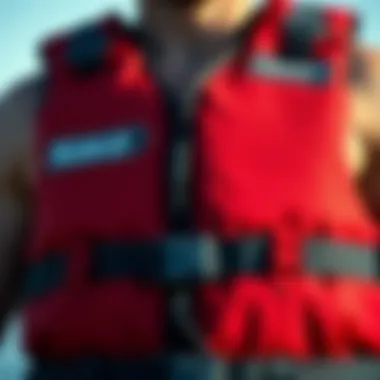
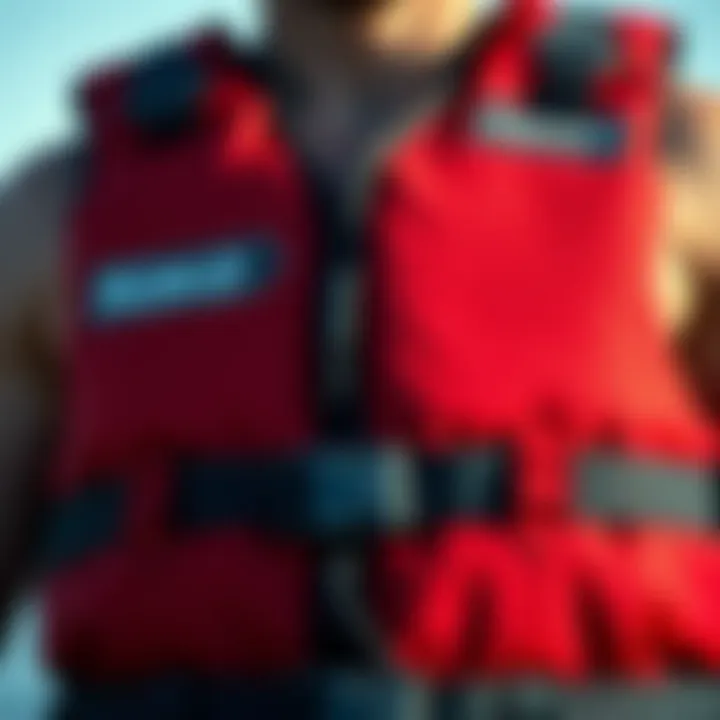
Intro
Life vests are often sidelined in conversations about extreme sports, but they play a central role in ensuring safety during some of the most exhilarating activities. While thrill-seekers frequently discuss adrenaline rushes and high stakes, the importance of having a dependable life vest should never be dismissed. Whether you're tackling white-water rapids in a kayak, surfing massive waves, or embarking on a sailboat adventure, the right life vest can be the difference between a thrilling escapade and a dangerous mishap.
Understanding how these essential pieces of equipment function can empower enthusiasts to make informed choices. They are engineered to provide buoyancy and support, looking after you in unforeseen situations. In the next sections, we will dive deeper into specific techniques that can elevate your skills, point out essential gear that every beginner should consider, and emphasize best safety measures to adopt. Each tip is constructed to enhance your experience while keeping safety at the forefront of your aquatic adventures.
As we explore the functionality of life vests, let's take note of some important aspects regarding their construction, types, and importance in extreme sports culture. With this knowledge at hand, extreme sports aficionados can participate confidently and responsibly in their beloved activities.
The Role of Life Vests in Water Safety
Water activities can be both exhilarating and unpredictable. Life vests play a cructial role in making those thrilling moments safer. The significance of life vests extends beyond mere compliance with safety regulations; they are fundamental in protecting lives when water takes an unexpected turn. Extreme sports enthusiasts, who venture into rough waters, benefit immensely from understanding how these devices work and why they matter. In extreme circumstances, where every second counts, a life vest can mean the difference between life and death.
Defining Life Vests and Their Purpose
Life vests, or personal flotation devices (PFDs), are designed to keep a person afloat in water. They come in various shapes and sizes tailored to specific activities, including kayaking, sailing, and jet skiing. At their core, life vests consist of buoyant materials, typically foam or inflatable components, that provide support for individuals who may find themselves struggling in turbulent water.
In extreme sports, where the risks can amplify quickly, understanding the purpose of life vests is essential. They not only assist in buoyancy but also help stabilize swimmers to avoid inhaling water during panic situations. This stability can be a lifesaver when facing sudden capsizing or rapid currents. Overall, the primary function of a life vest is to ensure that individuals remain afloat long enough for assistance to arrive, whether it’s from fellow sports enthusiasts or emergency services.
How Life Vests Prevent Drowning
Drowning is a silent threat, and it doesn't always look like what one might think. It can happen within seconds, especially in extreme waters where waves crash and chaos ensues. Life vests act as a first line of defense against such emergencies. Here’s how they help prevent drowning:
- Buoyancy: The main feature of life vests is their buoyancy which keeps the user afloat, reducing the need for constant swimming.
- Visibility: Many life vests are brightly colored, making it easier for rescuers to spot individuals in distress. This visibility can be critical in fast-moving water or in bad weather conditions.
- Grace Under Pressure: In a situation where panic could set in, a life vest gently reminds users to stay floating and calm. This piece of equipment can help individuals focus on their survival rather than floundering about.
"Wearing a life vest is not just a piece of gear; it's a commitment to safety. When the waters get choppy, trust your life vest to do its job while you handle the adventure."
Types of Life Vests: An Overview
When it comes to extreme sports, safety gear is non-negotiable. Life vests, in particular, play a crucial role in safeguarding adventure seekers against unexpected circumstances. Understanding the various types of life vests is essential for anyone engaging in water-based activities. Not only does this knowledge enhance your safety experience, but it also empowers you to make informed choices in selecting the appropriate vest for your specific needs.
Coast Guard Approved Life Vests
In the realm of life vests, Coast Guard approved models stand out prominently. These vests have met the rigorous standards set forth by the U.S. Coast Guard, ensuring they provide adequate buoyancy and safety. Their design is typically robust, made to withstand rough water conditions and help keep the wearer afloat in emergency situations.
Moreover, coast guard approved life vests come in various styles depending on the activity you are participating in. Whether you are sailing, partaking in water skiing, or kayaking, these vests offer reliable protection.
Inflatable vs. Non-Inflatable Options
The choice between inflatable and non-inflatable life vests can often be the difference between comfort and safety. Inflatable vests tend to be lightweight and less cumbersome, making them comfortable for prolonged wear. However, they require a bit more attention to ensure they are inflated correctly. Unforeseen circumstances can lead to a malfunction in case of emergency, so it is crucial to regularly check them.
On the other hand, non-inflatable life vests, while bulkier, provide inherent buoyancy. They don’t depend on the activation mechanism like inflatable ones do, thus offering peace of mind in rugged waters. Choosing between the two often relies on personal preference and the specific nature of your sport, with each having its unique advantages.
Specialized Life Vests for Extreme Sports
Extreme sports have their own specialized requirements, and that applies equally to life vests. Brands like Onyx and Mustang Survival offer designs tailored for high-adrenaline activities, integrating features that consider both safety and performance. These vests often boast additional padding, pockets for storage, and enhanced durability, giving users flexibility while not compromising on safety. They are designed to withstand the rigors of activities such as white-water rafting or jet skiing.
Moreover, specialized life vests come in various sizes and designs tailored specifically to either male or female wearers, making comfort and fit paramount. In extreme sports, where every second counts, having the right vest can indeed be a game-changer. Whether you’re racing down rapids or navigating large waves, choosing the right life vest lays the groundwork for a safer adventure.
The Mechanics of Life Vests
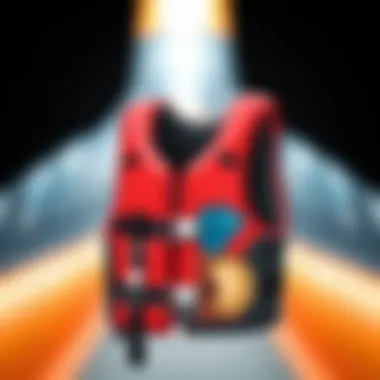
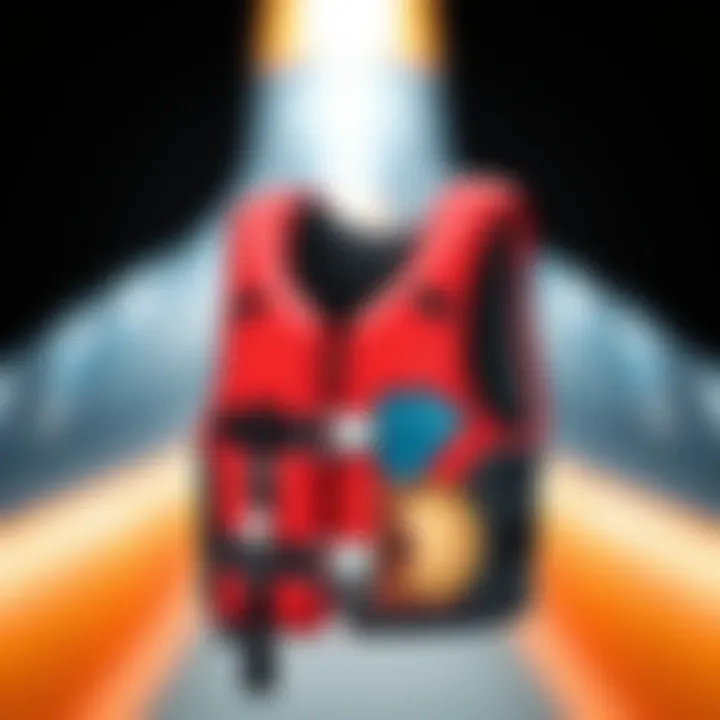
When delving into the mechanics of life vests, we uncover a blend of science and practicality that works harmoniously to keep adventurers safe. Understanding the fundamentals of buoyancy and the materials involved in life vest design is crucial, especially for those who thrive on adrenaline.
How Buoyancy Works
Buoyancy is the force that enables objects to float. In the context of life vests, this principle is not just a nice-to-have; it's the very foundation of their functionality. When a life vest is worn, it displaces water equal to its volume, creating an upward force that counterbalances the downward pull of gravity acting on the wearer's body. This is a vital concept to grasp, especially for individuals engaged in extreme sports.
To give an example, consider a kayaker capsizing in rough waters. Without a life vest, the kayaker would struggle to keep their head above water, making drowning a real possibility. However, once a life vest is on, it significantly enhances the chance of staying afloat and keeping airways clear.
- The key to buoyancy lies in:
- Air-filled chambers: Most life vests have compartments designed to trap air, which provides lift.
- Material density: Lightweight materials like closed-cell foam play a pivotal role in buoyancy.
- Distribution of weight: The design ensures the wearer's weight is balanced, aiding in neutral buoyancy.
This principle gives life vests their power. They are crafted with precision, ensuring they deliver adequate buoyancy in various aquatic scenarios, making them a crucial tool for any thrill-seeker.
The Role of Materials in Functionality
The materials used in life vests are not simply chosen for their appearance—they play a critical role in ensuring safety and functionality. A robust understanding of these materials aids users in making informed decisions about life vests suited for extreme sports.
Life vests generally feature a combination of buoyant and durable fabrics. Neoprene and nylon are common for exterior layers, chosen for their strength and resistance to abrasion, while the inner layers emphasize comfort and insulation. Here are some key points about the materials:
- Closed-cell foam: This type of foam is essential for buoyancy. It's lightweight and traps air, providing that crucial floatation we depend on.
- Reflective materials: Many life vests incorporate reflective strips to enhance visibility. This is beneficial in emergencies when every second counts.
- Durability: Materials like Cordura® are often utilized for their wear resistance, especially in rugged environments like river rapids or ocean waves.
The synergy between materials and design ensures that life vests are not only effective but also comfortable to wear. Good fit and feel contribute to the user's likelihood of keeping it on when it matters most—during high-pressure situations.
To sum up, understanding how buoyancy works and the significance of the materials used in life vests helps adventure enthusiasts appreciate the careful engineering that goes into creating these essential safety devices. Each vest has a story, crafted to withstand extremes while keeping wearers safe. For further reading on buoyancy, you can visit Wikipedia and learn about the fundamental principles that govern this natural phenomenon.
Selecting the Right Life Vest for Extreme Sports
Choosing the proper life vest for extreme sports is an essential part of ensuring safety while navigating unpredictable waters. The right vest can mean the difference between life and death, especially in activities where high speeds and challenging environments are involved. This section highlights crucial elements, benefits, and considerations surrounding the selection of life vests, focusing on elements such as flotation capacity, comfort, and the specific demands of your chosen sport.
Factors to Consider in Selection
When selecting a life vest for extreme sports, there are several factors that require careful consideration:
- Type of Activity: Depending on whether you're kayaking, wakeboarding, or participating in white-water rafting, the type of life vest will vary. Some water sports require a less bulky design to allow for maximum mobility.
- Flotation Ratings: Life vests come with different flotation ratings. It's crucial to choose one that can support your weight while maintaining buoyancy, especially if you're venturing into rough waters.
- Material and Construction: The material’s durability plays a vital role in the vest's performance. Brands like Mustang Survival and NRS offer vests made from highly resistant materials, which can withstand harsher conditions and offer better longevity.
- Safety Certifications: Always check for Coast Guard approvals or other certifications. A vest that's been rigorously tested offers peace of mind and aligns with safety standards, making certain you’re not just getting a floatation device but a safety tool.
- Additional Features: Some vests come with pockets, reflective strips, or hydration systems. Evaluating these features can enhance your comfort and performance.
The Importance of Fit and Comfort
Fit and comfort are paramount when it comes to life vests, especially in the realm of extreme sports. A poorly fitting vest can restrict movement or, worse, fail to keep you afloat properly:
- Adjustability: Look for vests with adjustable straps to ensure they fit snugly yet comfortably. A great fit will prevent the vest from riding up during activity, allowing for unimpeded movement.
- Size Matters: Make sure to select a size based on your measurements, and consider fitting it while wearing the type of clothing you'll be using when engaging in your sport. A vest that's too large might hinder swimming, while one that's too small could cause discomfort or improper buoyancy.
- Comfort Level: The materials used can have a huge impact on comfort. Soft, flexible materials like neoprene can contour better to your body, while hard fabrics might increase chafing.
"It's not just about staying afloat; it's about feeling secure enough to push your limits."
For consistent updates on equipment standards and safety guidelines, consider checking resources like National Oceanic and Atmospheric Administration or safety-focused forums on Reddit.
Maintenance and Care of Life Vests
Ensuring the longevity and functionality of life vests is crucial for individuals engaged in extreme sports. Regular maintenance and care not only prolong the life of these safety devices but also guarantee their effectiveness when it matters most. Without proper attention, the very gear meant to protect can become less dependable, leading to potentially dangerous situations. Capacity to trust your life vest hinges upon your investment in its upkeep.
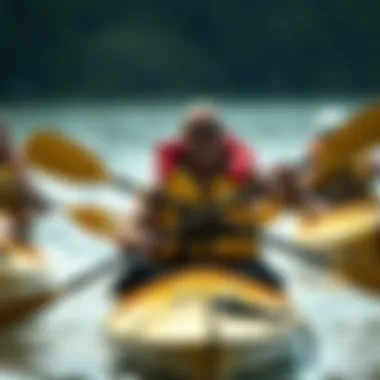
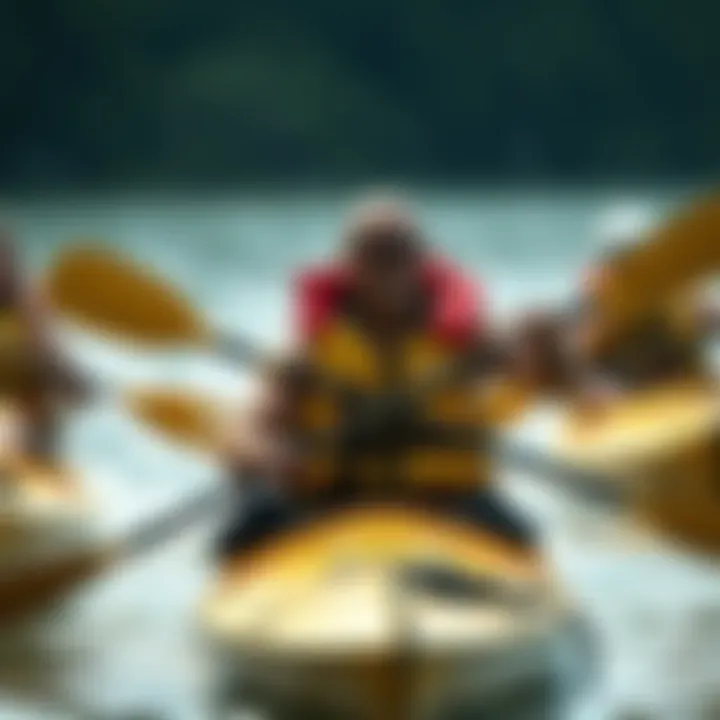
Routine Checks and Inspections
Before hitting the water, it's wise to check your life vest for any signs of wear and tear. Here are some key aspects to focus on:
- Inspect the Fabric: Look for frayed seams, rips, or faded colors. A vest with compromised fabric might not provide sufficient buoyancy.
- Check the Straps and Buckles: Ensure that all straps are functional and that buckles aren't brittle or broken. These components hold the vest in place, a critical factor in emergency situations.
- Test the Inflation Mechanism: If you have an inflatable life vest, always test the inflation mechanism beforehand. Taking it for granted could leave you floundering when need arises.
- Verify the Buoyancy: Gently squeeze the vest; it should feel firm and buoyant. If it seems waterlogged or saggy, it might be time to replace it.
Routine inspections can save lives. A simple check pre-water activities can be the difference between life and death. Holes and broken parts might not be noticeable until it’s too late. Therefore, commit to regular checks as an integral part of your water sport routine.
Cleaning and Storage Recommendations
Aside from inspections, cleaning and storing your life vest properly is essential. Here are some recommendations to consider:
- Rinse with Fresh Water: After each use, especially in saltwater or chlorinated environments, rinse the vest with fresh water. This helps remove corrosive elements that can degrade the fabric and materials over time.
- Mild Soap for Stains: For stubborn spots, a mixture of mild soap and lukewarm water can be employed. Avoid harsh chemicals that can break down the protective elements of the material.
- Dry Thoroughly: Never store a damp vest. Hang it out in a shaded area or on a drying rack. Storing wet vests can lead to mold and mildew, making them unpleasant and even unsafe for use.
- Store in a Cool, Dry Place: When not in use, your life vest should be stored in a cool environment away from direct sunlight and heat. Sunlight can cause colors to fade and materials to become brittle.
"Proper care of your life vest is an easy way to enhance your adventures safely. A small bit of maintenance goes a long way!"
By following these cleaning and storage practices, not only do you maintain the aesthetics of your gear, but you also ensure it functions effectively when the time comes. Just like any equipment, investing effort into maintenance safeguards your experiences while enjoying the thrills of extreme water sports.
The Intersection of Life Vests and Extreme Sports Culture
Life vests are not just a piece of equipment in extreme sports; they embody a culture of safety and responsibility among adventurers. The sense of thrill that comes with activities like kayaking or wakeboarding is often accompanied by a mutual understanding within the community that safety should never take a back seat. This intersection of life vests and extreme sports culture highlights the significance of protective gear in ensuring enjoyable and memorable experiences in demanding water activities.
A significant aspect of this culture is the collective emphasis on safety protocols, which guide thrill-seekers in making informed decisions while on the water. These guidelines, often developed through hard-earned lessons, create a foundation for participants to understand the risks involved and how to mitigate them. In water sports, where conditions can change rapidly, being prepared with the right gear—including a well-fitted life vest—can be the key to returning home safely after an exciting day on the water.
The notion that safety measures, especially life vest usage, are an intrinsic part of the adventure experience resonates deeply with the community. Enthusiasts often share stories of how their life vests have saved lives, reinforcing the belief that no adventure is worth risking one's safety. Furthermore, social media platforms play a crucial role in spreading this message, as extreme sports advocates frequently post not only their achievements but also the gear they use to stay safe during their adventures.
Safety Protocols in Adventure Sports
The foundation of any extreme sport activity rests on established safety protocols. They serve as the rulebook that all athletes agree to follow, ensuring a shared commitment to safety. In this context, life vests are regarded not merely as optional but as essential equipment that every participant ought to wear.
- Pre-Activity Briefings: It's common for teams or groups to have brief meetings before hitting the water, discussing safety measures that include mandatory life vest usage.
- Assessing Conditions: Adventure sports enthusiasts are trained to evaluate water conditions prior to participation. Understanding the environment—like currents, waves, and wind—affects the decision on how to gear up properly.
- Emergency Protocols: Knowing what to do in case of capsize or distress is paramount. Life vests facilitate floatation, buy time for rescue, and enhance chances of survival, all whilst contributing to operation of emergency protocols.
Ultimately, these protocols reinforce a mindset that prioritizes safety without dampening the spirit of adventure. They create a safety net that enables participants to explore boundaries while ensuring they can retreat safely.
The Community Perspective on Safety Gear
The perspective on life vests within the extreme sports community reflects a collective commitment to safety and camaraderie. For thrill-seekers, these vests symbolize not only protection but also a collective identity centered on shared experiences.
- Shared Knowledge: Adventurers often exchange information regarding the best brands and features of life vests suited for various sports, ranging from minimalist designs for surfing to multi-functional options for kayaking. This knowledge-sharing fosters trust and bonds among participants.
- Influence on Choices: As the community evolves, so does its attitude towards safety gear. Life vests have gradually become more stylish and less restrictive, appealing to aesthetics without compromising safety. A community that prioritizes sleek, effective designs encourages wider adoption among casual participants, lessening resistance to wearing them.
- Promoting Responsibility: Those who advocate for proper safety gear often find themselves serving as role models. Their experiences lead them to share lessons learned with others, often prompting newcomers to adopt a culture where safety gear, particularly life vests, is non-negotiable.
Real-Life Impacts of Life Vest Usage
The impact of life vests in extreme sports stretches far beyond simple floatation. These devices can drastically turn the tide of survival during aquatic mishaps. This section delves into both personal stories of triumph and hard data, demonstrating why life vests aren't just an accessory, but a lifeline for thrill-seekers.
Survivor Stories: Testimonials from Extreme Sports Enthusiasts
Hearing firsthand accounts from those who have come face to face with danger is powerful. Here are some thrilling real-life narratives from extreme sports enthusiasts.
One story comes from Sarah, who enjoys whitewater rafting. One stormy afternoon, while navigating a particularly aggressive stretch of the river, her raft flipped. In her own words, "I honestly thought it was the end for me, but my life vest kept me afloat and allowed me to reach safety. I can’t stress enough the importance of wearing a vest—even for a momentary break."
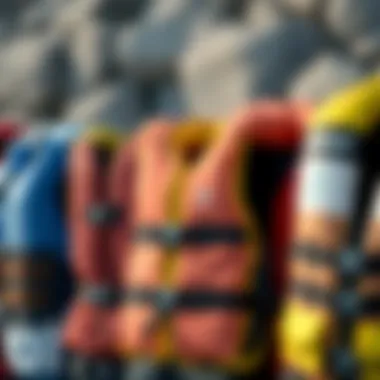
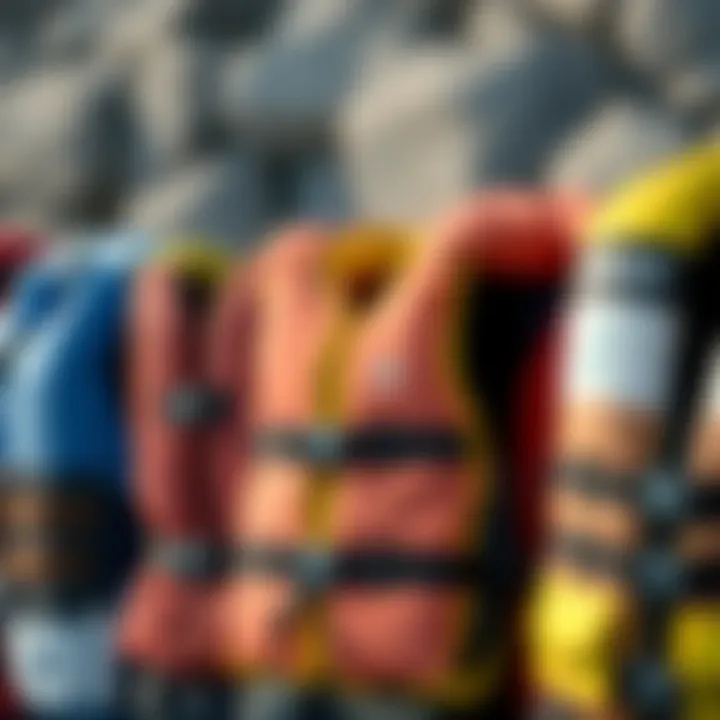
Another gripping tale comes from Jake, an avid jet skier. He recalls an incident when his machine malfunctioned and tossed him into the choppy sea. "The waves were tossing me around, and my first instinct was panic," Jake explains. "But as the saltwater stung my eyes, I remembered my training. Thanks to the buoyancy of my vest, I stayed on the surface, gasping for breath but alive."
These accounts highlight a contrasting thread; the emotional resilience gained from life vest usage often becomes a part of one’s adventure story.
Statistical Overview of Safety Improvements
Numbers speak volumes, too. According to the U.S. Coast Guard, nearly 80% of drowning victims were not wearing a life vest. The stark reality is that in 2021, 396 people lost their lives while participating in recreational boating activities; many of these tragedies could have been avoided if the individuals had opted for proper life vests.
- In 2020, the use of life vests saw a more than 20% increase with statistics indicating a decline in drowning death rates in the wake of public safety campaigns.
- Safety organizations and community efforts have shown that wearing life vests reduces fatalities by over 50% in high-risk water sports.
This data doesn’t lie. It paints a definitive picture that should resonate with anyone dipping their toes—or more—into extreme water sports. While thrill-seeking may be the goal, embracing safety gear like life vests is essential for turning potential disaster into a thrilling tale of survival.
Future Developments in Life Vest Technology
The realm of water sports is ever-changing, with adventurers always pushing boundaries. As extreme sports gain popularity, life vest technology is also advancing at a breakneck speed. It's not just about keeping afloat anymore; it’s about enhancing safety, comfort, and usability in extreme conditions. Understanding the trajectory of innovation in life vests is crucial for enthusiasts who value safety as they dive into thrilling escapades.
Innovative Materials and Designs
A vital aspect of these advancements lies in the materials used for crafting life vests. Traditional vests, usually bulky and heavy, are gradually being replaced by lighter and more flexible alternatives. Modern life vests often incorporate high-tech fabrics that are not only durable but also lighter, making them more comfortable for prolonged wear. Here are some noteworthy materials:
- Neoprene: Commonly utilized for wet suits, neoprene provides excellent insulation and buoyancy.
- Kelp-based Materials: Some brands are even experimenting with eco-friendly options, which are biodegradable yet maintain performance standards.
- Smart Fabrics: These fabrics contain embedded sensors that monitor the user’s vital signs and can alert rescuers in emergencies.
Design innovations also play a significant role. Modular designs allow users to customize their vests based on their specific sports requirements. For instance, a kayak enthusiast might prefer a streamlined vest with additional pocket space, while a wakeboarder may opt for a bulkier design that can accommodate impacts better. The aesthetics are shifting too; contemporary vests are available in a rainbow of colors and styles, appealing to a broader demographic.
The Influence of Technology on Safety Gear
The dawn of high-tech safety gear is reshaping how extreme sports are approached, especially in terms of life vests. With the integration of technology, the gap between a simple life vest and a smart safety device is narrowing. Key innovations include:
- Wireless Communication: Some modern vests come equipped with GPS tracking. In case of an emergency, these vests can immediately transmit location data to rescue teams, drastically decreasing response time.
- Inflatable Systems: Life vests now often feature automatic inflation mechanisms that deploy when submerged in water. This technology not only aids buoyancy but also ensures ease of movement, especially during high-adrenaline activities like white-water rafting.
- Wearable Tech Compatibility: Compatibility with smartwatches and fitness trackers means that wearers can track their heart rate and stress levels. Should a rider hit panic mode during extreme conditions, their device could alert their peers or emergency services.
"Safety is paramount, but it doesn’t hurt that gear can now be as stylish as it is functional."
Ultimately, the future of life vests hinges on a seamless blend of safety, comfort, and technology. As adventurers push the envelope further into the unknown, life vest innovations adapt, ensuring that thrill-seekers enjoy their experiences while prioritizing their safety. Understanding these developments isn’t merely a matter of interest—it's about making informed choices that can genuinely make a difference out on the water.
By keeping an eye on these trends, extreme sports enthusiasts can not only enhance their own safety but also contribute to the ongoing dialogue about best practices and advancements in aquatic adventure gear.
Culmination: The Essential Role of Life Vests in Extreme Water Sports
Life vests are not merely an accessory in extreme water sports; they are the very lifeline that promotes safety in adventures filled with unpredictability and excitement. Understanding their functionality elevates the conversation around water safety beyond just compliance with regulations. It involves recognizing that each time a thrill-seeker pushes their boundaries, the importance of a well-fitted, reliable life vest cannot be overstated.
In this article, we’ve delved into several significant elements surrounding life vests. The discussion began with defining their core purpose and how they actively prevent drowning situations. Various types were presented, focusing on Coast Guard approved options and specialized designs tailored for extreme sports. We explored the mechanics—how buoyancy works and the materials used, which can make a world of difference when it comes to performance and safety.
Moreover, selecting the right life vest isn’t just about fashion; it demands serious consideration regarding fit and comfort, as these factors can influence performance during intense activities. Its maintenance, care practices, and inspection checks emerged as fundamental to ensuring that the vest remains operational when it must perform. Furthermore, understanding the culture surrounding life vests within the extreme sports community sheds light on the broader discourse of safety protocols and advocacy for organized practices.
In essence, a well-chosen life vest can mean the difference between a thrilling adventure and a tragic incident. Understanding its implication deepens one’s appreciation for this essential gear.
Recap of Key Points
- Life vests define safety in water-centric extreme sports, serving as a vital line of defense.
- Different types, including inflatable and non-inflatable variants, cater to various needs in extreme sports environments.
- Proper fit and comfort significantly impact performance and safety.
- Routine checks and maintenance of life vests are crucial in ensuring reliability when it matters most.
- The discussion around life vests extends into the cultural mindset of extreme sports enthusiasts, emphasizing the importance of communal safety practices.
Final Thoughts on Safety and Adventure
In the world of adventure sports, thrill is an essential ingredient, but so is safety. Acknowledging the role of life vests encourages a mindset where safety measures are integrated into the journey rather than seen as miserable obligations. Adrenaline can propel one into uncharted waters, but a dependable life vest keeps an adventurer afloat.
For every extreme sports lover, the goal must always be to embrace the rush while holding onto safety. In that balance lies the authentic essence of adventure—an exhilarating pursuit fueled by the freedom to explore yet anchored by the vigilance of respecting nature's vast unpredictability. As the saying goes, "It’s not about the fall; it’s about how well you get back up," and a life vest truly is part of that safety net.







